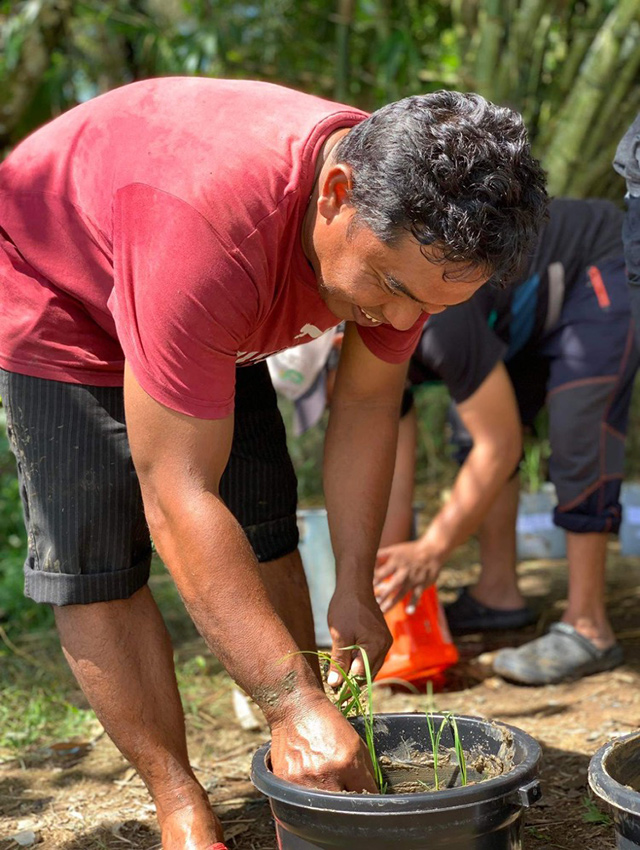
The use of Minus-One Element Technique (MOET), a farmer-friendly and quick soil analysis kit, added 20 cavans (62kg/cavan) to the harvest of a farmer in Bislig City, Surigao del Sur.
Ryan F. Alvar usually harvests 35 cavans (62kg/cavan) from his 0.8-ha field. When he applied his learnings on the use of MOET from the PalaySikatan, a technology demonstration farm established by DA-PhilRice Agusan under the Rice Competitiveness Enhancement Fund (RCEF)-Seed Program, his harvest went up to 55 cavans (36%).
“I have been a farmer for a very long time. I was born into a family of farmers but I have only realized now that my practices in terms of fertilizer management need to change. Before, I would automatically apply ammonium in my field whenever I notice problems with my plants,” Alvar said.
While he believed that applying the right type of fertilizer is very important, he had a hard time determining the specific fertilizers he needed to apply in his field.

With his new learnings, he started using MOET in his field for the 2022 dry season. Based on the MOET app’s recommendations, Alvar used two bags of ammonium phosphate (16-20-0) and one bag of Complete (14-14-14) fertilizer.
“I am grateful that I learned how to use this tool. Now, I will not struggle in determining the fertilizers that my plants need,” he said.
MOET is developed by the Department of Agriculture-Philippine Rice Research Institute (DA-PhilRice).
The Rice Competitiveness Enhancement Fund (RCEF) – Seed Program, created under the RA 11203 also known as the Rice Tariffication Law (RTL) and implemented by the DA-PhilRice Agusan, pursues to establish more MOET set-ups in other areas of Northern Mindanao, Caraga Region, and Davao Region to further promote cost-reducing and yield-enhancing technologies.




